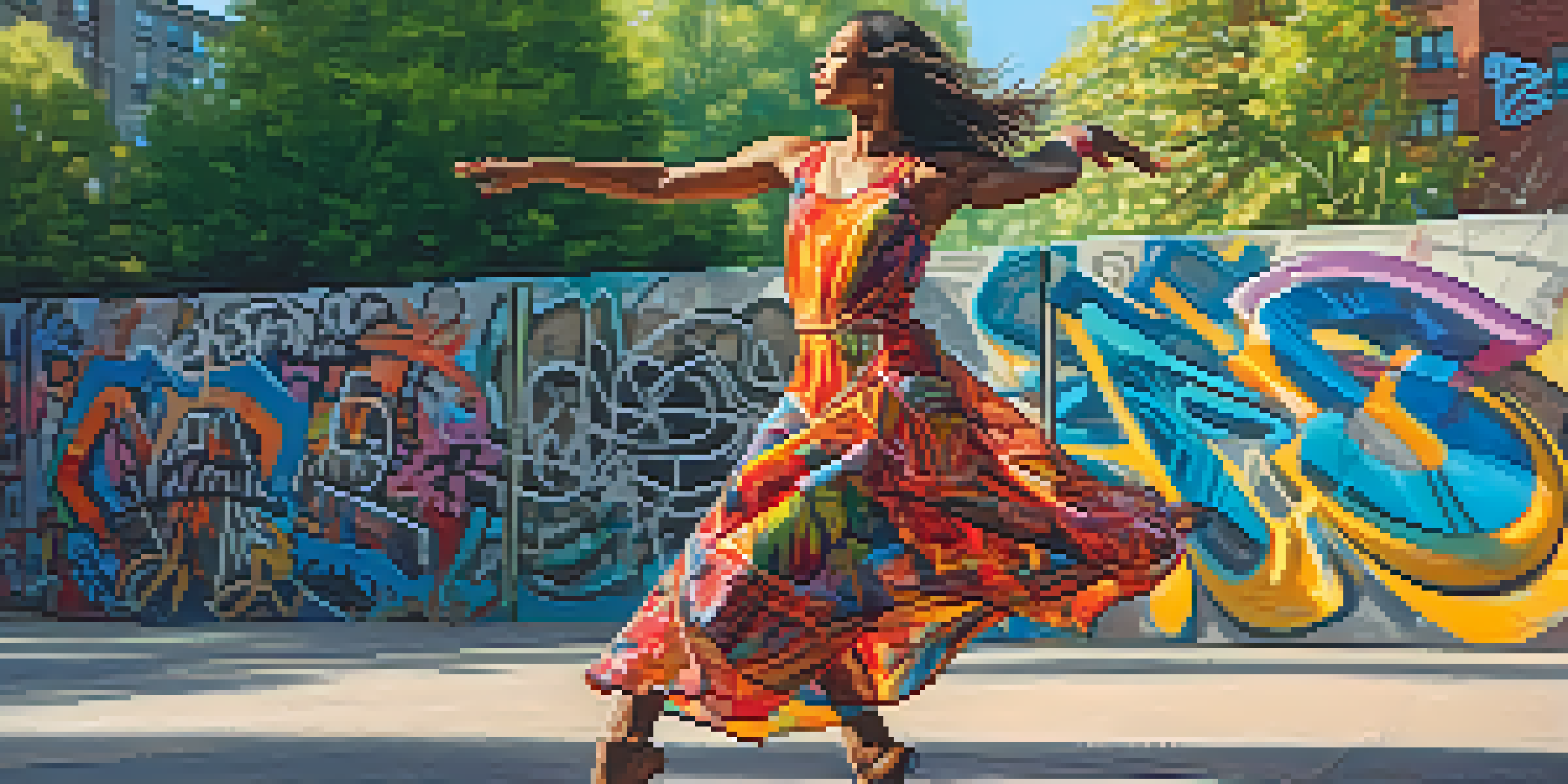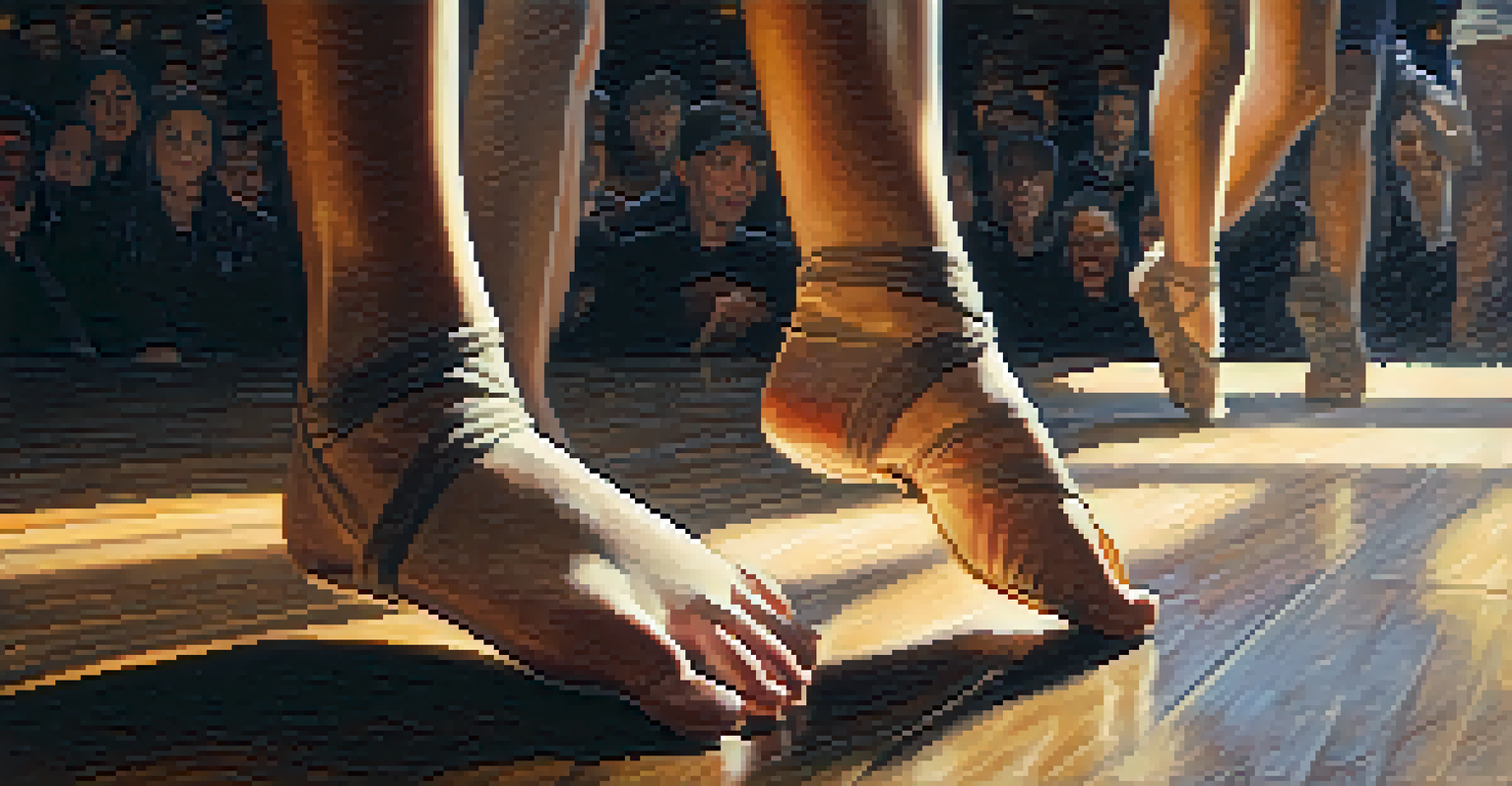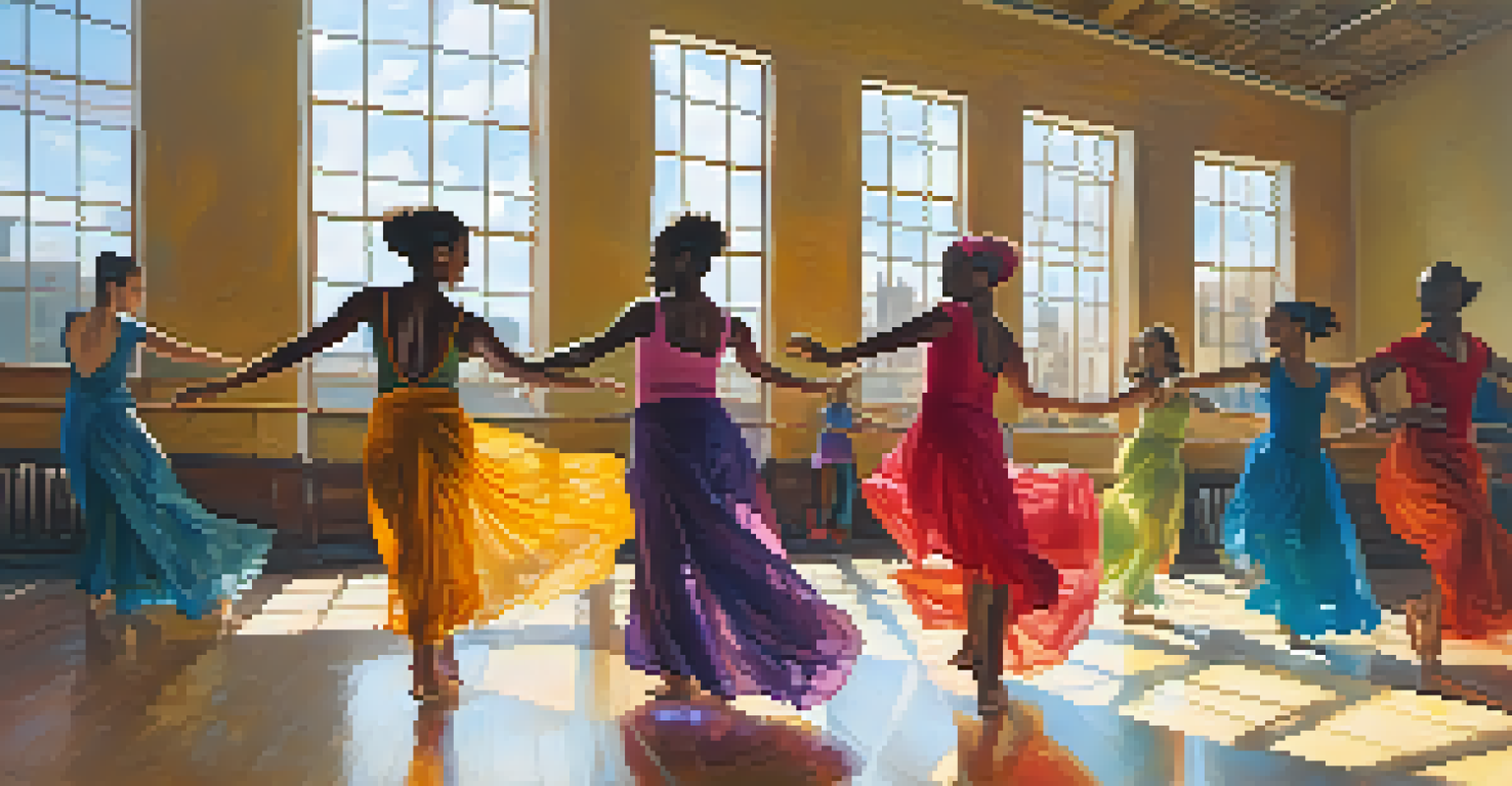Improvisation in Dance: Bridging Tradition and Innovation

Understanding Improvisation in Dance: A Creative Journey
Improvisation in dance is the spontaneous creation of movement, allowing dancers to express themselves in real-time. Unlike choreographed routines, improvisation encourages dancers to tap into their instincts and emotions, often leading to unique and unexpected performances. This art form can feel like a conversation, where the dancer listens to their body and reacts to the music or environment around them.
Dance is the hidden language of the soul.
The beauty of improvisation lies in its ability to bridge the gap between structured dance forms and free expression. Dancers might incorporate traditional techniques while allowing their movements to evolve organically. This blend creates a dynamic experience that resonates with both the performer and the audience.
Moreover, improvisation can serve as a tool for exploring personal narratives and cultural stories, making it a powerful medium for connection. Just as a poet plays with words, dancers can weave together movements that speak to their experiences, inviting viewers to share in their journey.
The Role of Tradition in Dance Improvisation
Tradition plays an essential role in dance improvisation, providing a foundation from which dancers can innovate. Many improvisational dancers draw from classical styles, such as ballet or folk dance, where specific techniques and movements become a springboard for creativity. By understanding the roots of these forms, dancers can push boundaries and redefine the art.

In many cultures, traditional dance styles are rich with history and meaning. Dancers who improvise within these frameworks can honor their heritage while also expressing contemporary issues and emotions. This connection to tradition not only enriches the performance but also fosters a sense of community and belonging.
Improvisation Fosters Personal Expression
Improvisation empowers dancers to express their individuality and emotions freely, creating a visceral experience that resonates with both themselves and their audience.
For instance, a dancer might incorporate traditional African rhythms into their improvisation, creating a fusion that respects the original while adding a modern twist. This kind of blending highlights the ongoing dialogue between past and present, making each performance a unique expression of cultural identity.
Innovation Through Improvisation: New Possibilities in Dance
Improvisation opens the door to endless possibilities in dance, allowing artists to explore uncharted territories. By breaking away from the constraints of choreography, dancers can experiment with unconventional movements, unexpected rhythms, and innovative styles. This exploration can lead to the development of entirely new genres of dance, expanding the art form's vocabulary.
Improvisation is the ability to create something new and spontaneous, enabling a true expression of oneself.
Innovative techniques often emerge from improvisational practices, inspiring dancers to push their physical limits. For example, incorporating elements from martial arts or contemporary circus into dance can create a thrilling visual experience that captivates audiences. Such cross-pollination of ideas encourages a spirit of experimentation and collaboration.
Moreover, technology has started to influence improvisation, with digital tools enabling dancers to create and share their work in new ways. From interactive performances that respond to audience movements to virtual reality environments that expand the dance floor, the fusion of technology and improvisation is leading to exciting developments in the field.
Improvisation as a Tool for Personal Expression
At its core, improvisation empowers dancers to express their individuality and emotions freely. This artistic freedom allows dancers to connect with their innermost feelings, translating them into movement that resonates with both themselves and their audience. It’s like pouring your heart out through your body, creating a visceral experience that can be both cathartic and exhilarating.
For many, improvisation becomes a form of therapy, helping them to process their thoughts and experiences. It encourages vulnerability, inviting dancers to showcase their raw emotions without the fear of judgment. This authenticity often leads to powerful performances that leave a lasting impact on viewers.
Tradition Fuels Creative Innovation
By drawing from traditional dance forms, dancers can innovate and push boundaries, resulting in performances that honor heritage while addressing contemporary issues.
Additionally, improvisation fosters a sense of presence and mindfulness. Dancers learn to be in the moment, responding to the nuances of the music and their surroundings. This practice not only enhances their performance skills but also cultivates a deeper connection to their body and movement.
The Collaborative Nature of Improvisational Dance
Improvisation thrives in collaborative environments, where dancers can interact and create together. This collective approach encourages participants to listen and respond to one another, resulting in a rich tapestry of movements that evolve in real time. When dancers collaborate, they build on each other's ideas, sparking creativity and inspiration that might not emerge in solo work.
In group improvisations, the dynamics can shift dramatically based on the energy and input of each dancer. This unpredictability can lead to delightful surprises, as movements blend and transform in unexpected ways. It’s akin to a jam session in music, where each artist contributes their voice to create something entirely new.
Furthermore, collaborative improvisation can break down barriers between styles and genres. Dancers from different backgrounds can come together, enriching their practice and broadening their perspectives. This fusion not only enhances individual artistry but also strengthens the community as a whole.
Challenges of Improvisation in Dance: Navigating the Unknown
While improvisation offers great freedom, it also presents unique challenges for dancers. The unpredictability of spontaneous movement can be daunting, especially for those accustomed to structured choreography. Dancers may struggle with self-doubt or fear of making mistakes, which can inhibit their ability to fully express themselves.
Another challenge lies in the need for strong communication skills during improvisation. Dancers must be attuned to their partners and the environment, responding to cues in real time. This requires a high level of trust and openness, as well as the ability to let go of control and embrace the unknown.
Collaboration Enhances Dance Improvisation
Collaborative improvisation encourages dancers to interact and respond to each other, creating a dynamic and evolving tapestry of movement in real time.
However, overcoming these challenges can lead to significant personal growth. Dancers who engage in improvisation often develop resilience, adaptability, and enhanced problem-solving skills. These qualities not only benefit their dance practice but also translate to other areas of life.
The Future of Improvisation in Dance: A Blend of Old and New
As we look to the future, the role of improvisation in dance continues to evolve, reflecting the changing landscape of society and culture. Dancers are increasingly blending traditional forms with contemporary influences, creating innovative performances that resonate with diverse audiences. This fusion not only keeps the art form alive but also ensures its relevance in a rapidly changing world.
Moreover, as more dancers embrace improvisation, we can expect to see an expansion of styles and techniques. The growing interest in cross-disciplinary collaboration—where dance intersects with theater, visual arts, and technology—will likely lead to exciting new expressions and interpretations of movement.

Ultimately, the future of improvisational dance promises to be a vibrant tapestry of tradition and innovation. By honoring the past while embracing the present, dancers will continue to inspire and captivate audiences for generations to come.